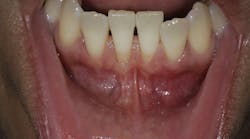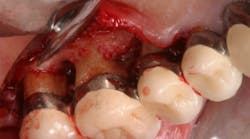Accuracy of technology for placing dental implants tested against cadaver measurements
Journal of Oral Implantology – Implant dentistry is now a common procedure, but the placement of the implants is crucial. Preoperative planning and positioning are essential steps to avoid complications for the patient, such as damage to the mental nerve. A new study compares the results of technologies for locating and measuring the anterior loop of the mental nerve with actual anatomic measurements on human cadavers.
RELATED ARTICLES ...
New fiber-reinforced composite material offers advancements in oral implants
Surgical techniques compared for reconstructing the jaw for dental implants
Stronger bone for oral surgery created by introducing microcracks in the jawbone
A study reported in the Journal of Oral Implantology used three methods to measure the anterior loop of the mental nerve on 12 human cadavers — cone beam computerized tomography (CBCT), a three-dimensional stereolithographic model (STL), and anatomy.
The mental nerve follows a looping course around the jaw, communicates with the facial nerve and provides sensory innervation to areas of the chin and lower lip. Injury to the anterior loop of the mental nerve can cause sensory disturbance, most notably numbness or altered sensory perception.
Reports on the length and location of the mental nerve vary widely between patients. One study found the anterior loop in 28% of the patients. However, another study reported it to be present 88% of the time. Some clinicians recommend maintaining a safety margin of 1 mm between implants and the nerve, others suggest as much as a 6 mm distance.
Because of conflicting reports, a variety of methods have been used to detect and measure the anterior loop. It has been determined that panoramic and periapical radiographs do not provide information about the loop that is reliable enough for clinicians to use in placing implants. This study seeks to determine the accuracy of CBCT and STL in identifying and measuring the anterior loop.
The CBCT was found to be accurate and reliable; however, the STL was found to significantly both overestimate and underestimate the anterior loop. Thus, the authors make the following recommendations:
• CBCT should be a prerequisite in identifying and measuring the anterior loop of the mental nerve for implant surgery.
• A fixed distance from the mental foramen (the point in the jaw where the nerve passes through) should not be used as a safety guideline; rather, the anterior loop itself should be located.
• A safety distance of at least 2 mm from the anterior-most portion of the loop should be observed in implant placement.
• The STL model should be used with caution; at this time, the model has not been shown to be highly accurate in estimating the anterior loop.
Full text of the article, “Accuracy of Cone Beam Computerized Tomography and a Three-Dimensional Stereolithographic Model in Identifying the Anterior Loop of the Mental Nerve: A Study on Cadavers,” Journal of Oral Implantology, Vol. 38, No.6, 2012, is available here.

